Do coffee filter paper choose bleaching or raw pulp? Do you need filter paper?
For professional baristas, please follow the coffee workshop (Wechat official account cafe_style)
For the increasingly popular hand-brewed coffee, a small, delicate and practical filter cup is very important. For a delicious cup of hand-brewed coffee, the right filter paper, as well as the correct use, also have a far-reaching impact.
Although many metal filter cups, clay filter cups and vintage flannel filters have been launched on the market, it is understandable that in the comparison of factors such as convenience and hygiene, as well as extraction flavor, filter paper has always had a great advantage-there is no dispute that the above conclusion can be easily drawn from the application rate of the market and the selection of equipment for players in international hand races.

So, in practical application, should we choose bleached filter paper or unbleached filter paper? How to avoid the smell of paper brought by filter paper? Do you need filter paper before brewing?
The following will be answered by the editor:
The origin of coffee filter paper
In 1908, a German housewife Melitta Bentz liked freshly brewed coffee, but she was a perfectionist suitor and hated the coffee grounds left between her teeth. One day, on a whim, she punched a hole in the bottom of the copper bowl, took out a piece of blotting paper from her son's schoolbag and put it into hot water, and immediately the mellow coffee dripped into the pot through the blotting paper. In this way, she invented a method of filtering dregs and retaining the aroma of mellow coffee. In December of the same year, Mrs. Bentz founded Melitta Bentz, the famous "Melita" brand.

Before this invention, people used cloth bags to filter coffee grounds. However, the cloth filter bag is troublesome to clean and unhygienic after being used many times, and the coffee grounds left in the gap in the cloth bag are also easy to destroy the original mellow taste of coffee. From then on, a small piece of filter paper opened the concept of coffee filtration, and today it leads the trend of boutique coffee for a century.
Bleached filter paper vs unbleached filter paper
Coffee filter paper is mostly made of wood, and the pulp color after wood cooking is mostly brown, and it takes several stages of bleaching process to turn white.
The difference between coffee filter paper bleaching and non-bleaching is as follows:
1. Bleaching: the coffee filter paper looks whiter when it is bleached. The traditional bleaching methods are nothing more than chlorine bleaching and peroxy bleaching. In modern times, advanced enzyme bleaching, that is, the use of bioactive enzymes for bleaching, this technology is widely used in the field of medicine, the degree of harm can be ignored. The taste of the paper itself is already very light.
2, no bleaching: refers to coffee filter paper without bleaching, filter paper looks close to light brown. Therefore, it is also known as "original pulp filter paper" and "log filter paper". Compared with the white filter paper, the flavor of the filter paper itself is aggravated, so it is necessary to fully soak the filter paper with boiling water when brewing coffee, some of which are wet at least 2 or 3 times in order to reduce the smell of the paper into the coffee.
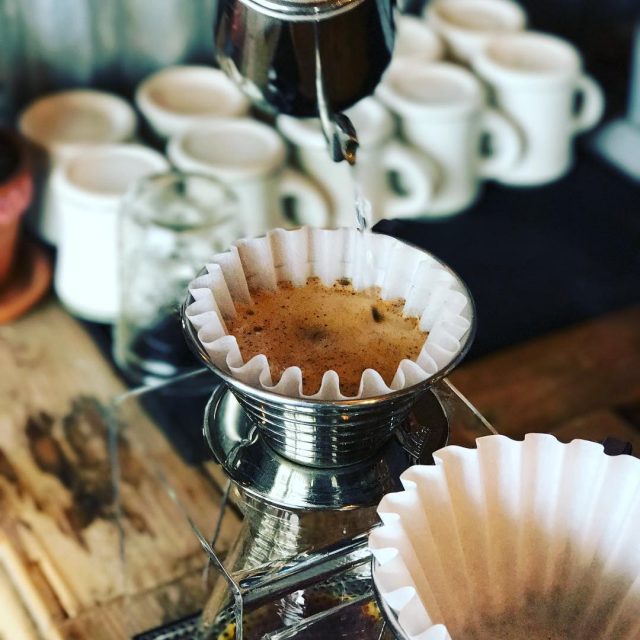
How to choose?
This really depends on personal ability and willingness: do you prefer the flavor of coffee or the cause of environmental protection?
In fact, all qualified manufacturers will indicate the way of bleaching on the packaging of the filter paper, so that people can make a choice.
In terms of environmental pollution, only chlorine bleaching process will have more serious pollution, while other bleaching processes require less process flow and are more environmentally friendly.
As for unbleached filter paper, if you can seriously wash the filter paper several times before each cooking, you can still consider supporting the cause of environmental protection. after all, compared with bleached filter paper, raw pulp filter paper requires less processing technology. it has less impact on the environment and less energy demand.
As for people like Xiaobian who attach great importance to the flavor and taste of coffee, of course they choose bleached filter paper. Once the paper taste of the raw pulp filter paper is not washed clean, it will directly destroy a good bubble of beans!
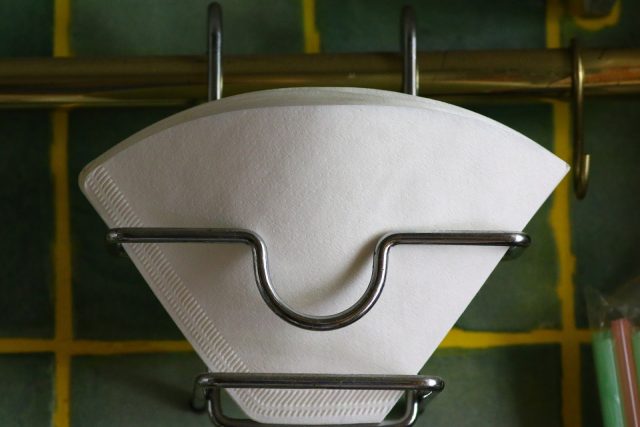
How to get rid of the smell of paper
Rinsing the filter paper will help avoid an unpleasant paper taste in the coffee and preheat your brewing equipment. Here are the specific actions:
Put the filter cup on the sharing pot (or wide mouth cup), fold the filter paper and put it in the filter cup.
Gently pour hot water, preheat the filter cup and rinse the filter paper (pay attention to the fit between the filter cup and the filter paper)
Pour out the filtered water.
Repeat the flushing steps again if necessary.
Start making your coffee.
Most filter paper should be ready to use after one flush, but some may need a second time (especially if you have a sensitive taste). If it still smells like paper after the second flushing, change your filter paper brand.
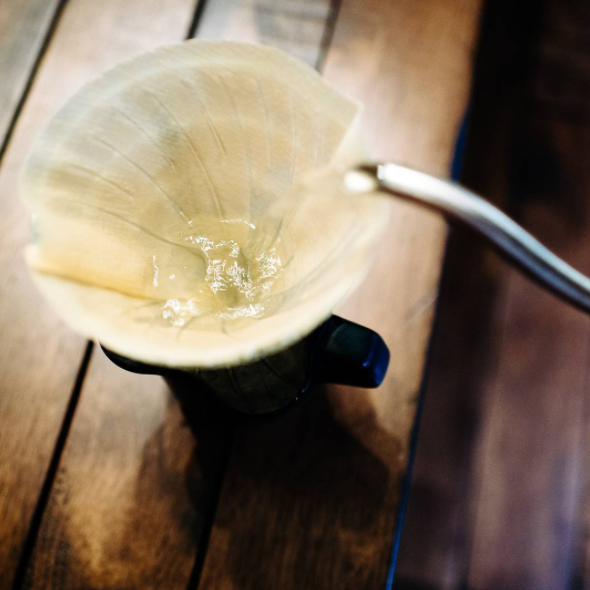
Quality and thickness of filter paper
Although we have been comparing bleached and unbleached coffee filter paper, this is not the only difference between filter paper. The quality of filter paper is also important for keeping coffee utensils clean and good filtration flow rate. It seems easy to say here, but in fact, the impact is really great.
In addition, be sure to choose filter paper that suits the size of the filter cup, and pay attention to the thickness and density-too thin and sparse filter paper will make the water flow too fast, while too thick and dense filter paper will filter out more coffee grease.
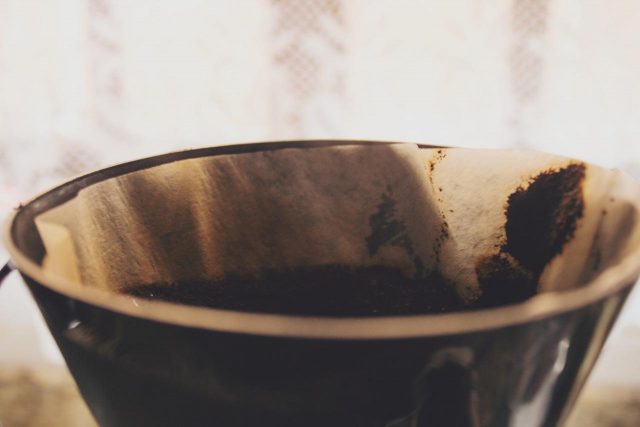
[common filter paper parameters]
one hundred and eleven

Wash? Or not? This is a problem.
For beginners, obediently follow the example of their predecessors, fold filter paper, wash filter paper, warm filter cup, anyway, just do it, but for people who are more independent, it is inevitable to float a trace of "Why do you have to wash filter paper?" I'm confused.
It doesn't matter, let's analyze it in detail:
one
For the sake of removing the smell of pulp
In fact, as mentioned above, because the original pulp filter paper has not been rinsed, the flavor of wood pulp is still very strong, so unwashed filter paper = suicide. And bleached filter paper, residual paper flavor and bleaching taste due to the brand system, high-quality filter paper can indeed be processed to be very clean, there is little difference between washing and unwashing.
two
For the consideration of the suitability of filter paper and filter cup
In fact, this problem involves a wide range of aspects, and it has something to do with the shape of your filter cup, the method of water injection, and the amount of water injected, but in most cases, the cooking of unwashed filter paper, the suitability of filter paper and filter cup is a little worse than that of preheating and pre-washing. As for whether this appropriateness affects the flavor of coffee or not, it still needs to be analyzed in detail.
However, there is no doubt that flushing the filter paper can improve the suitability of the filter cup and help fit the rib design and cooking principle of the filter cup.
three
In consideration of the absorption of coffee oil by filter paper and the initial extract
Actually, I think this is the point of the whole article.

According to a comparative cooking experiment, it can be concluded that
The coffee flavor of the pre-rinsed filter paper is relatively slightly sour, sweeter and more mellow.
Without rinsing the coffee flavor of the filter paper, the bitterness is more obvious, slightly astringent and vaguely similar to earthy or moldy wood.
Even from the color of the filter paper, it can be seen that without washing the filter paper, the filter paper will absorb part of the moisture and grease during steaming, and bring out some suspicious smells.
Therefore, for the complete consideration of extraction flavor, it is more appropriate to rinse the filter paper.
The experiment is from CSCA boutique Coffee Institute.
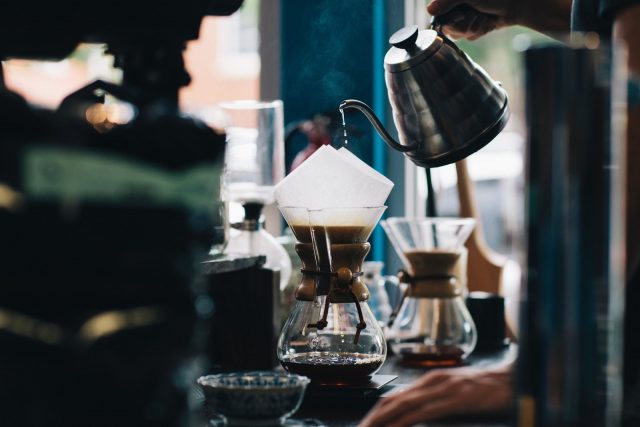
Is it necessary to develop the filter paper?
This does not mean that filter paper must be washed. In Europe and the United States, most of the filter paper is washed seriously by hand, while in Japan, filter paper is sometimes not washed at all. This also has something to do with the habit of hand flushing and the roasting flavor of coffee beans.
Deep roasting is popular in Japan, and the flavor of hand-made coffee is mostly mellow and strong, and the small amount of flavor and oil absorbed by filter paper does not affect the overall flavor of coffee at all, while the shallow baking schools in Europe and America are more popular, and most of them are fresh and delicate. The impact on filter paper is naturally more obvious.

So, finally, I would like to say a word to the novice and veteran: don't patronize to learn other people's cooking techniques and operating habits, but also think more about the principle behind the phenomenon. The journey of hand flushing is very long, we seek up and down!
Important Notice :
前街咖啡 FrontStreet Coffee has moved to new addredd:
FrontStreet Coffee Address: 315,Donghua East Road,GuangZhou
Tel:020 38364473
- Prev
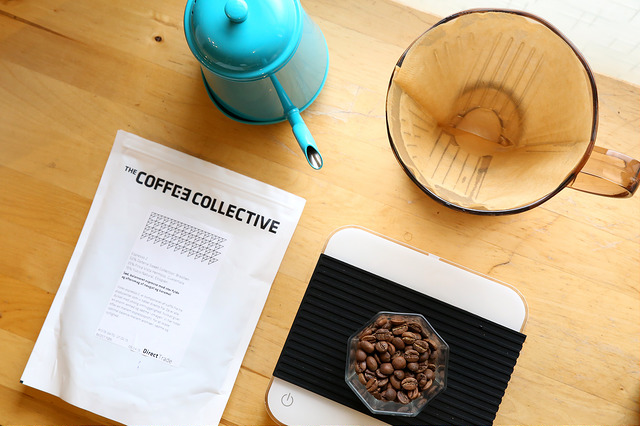
Smart filter cup, it's decided to be you! Making a good cup of coffee is as simple as that.
Communication of professional baristas Please follow the advent of the coffee workshop (Wechat official account cafe_style) smart filter cup (Clever Coffee Dripper), which has solved the problem encountered by many people in coffee brewing. Besides its own low price, there is no need to buy other hand-brewed coffee props. In use, simple operation steps, convenient cleaning, high fault tolerance and failure rate
- Next
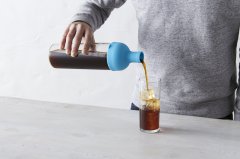
The blue bottle coffee launches the cold bubble coffee bottle, the exclusive professional cold bubble coffee, easy to do!
Exchange of professional baristas please follow the coffee workshop (Wechat official account cafe_style) Blue bottle Coffee Blue Bottle, which is popular in San Francisco, USA, known as APPLE in the coffee industry, this trend has spread to Asia, and closer Japan also has a stronghold of Blue Bottle, which has become one of the pilgrimage shops for coffee fans to visit Japan. But you have to fly that far.
Related
- What is the Philharmonic pressure? How to use Philharmonic pressure to make delicious coffee
- Why does a hand grinder have more fine powder than an electric grinder?
- In addition to the hot mom, what is the difference between the versions of EK43 | ditting and Mahdi ek43?
- What kind of equipment do you need to make coffee by hand? Introduction to novice starter cooking equipment tools
- Espresso needs to be ground how thick and thin scale entry Italian Coffee Machine Bean Grinder investigation and Grinding course
- How much does it cost to open a small private cafe? How much does it cost to learn coffee? How to operate it?
- The difference between the flavor characteristics of hand-brewed coffee and coffee maker is hand-brewed coffee really better than coffee maker? Can I use a coffee machine to make coffee beans by hand?
- The difference between 01 and 02 of hario v60 filter cup what is the difference between 01 and 02 filter cup opening and cooking flavor
- What's the difference between the smart cup and the French kettle? Which is better, the French kettle or the Smart Cup?
- What's the difference between a smart cup and a V60 filter cup? The difference between the taste of smart cup and hand-brewed coffee

